There is a lot more to enjoying Australia’s wildlife than cuddling a koala or feeding a kangaroo. Check out these amazing wildlife experiences that take you beyond zoos and wildlife parks and up close with some unique Australian animals in their natural habitat.
Australian natives Natalie and Steve share the best Australian wildlife experiences that they’ve had. Plus we add in our favorite animal encounters in Australia too!
Table of Contents
12 Australian Wildlife Experiences
1. Quokkas on Rottnest Island
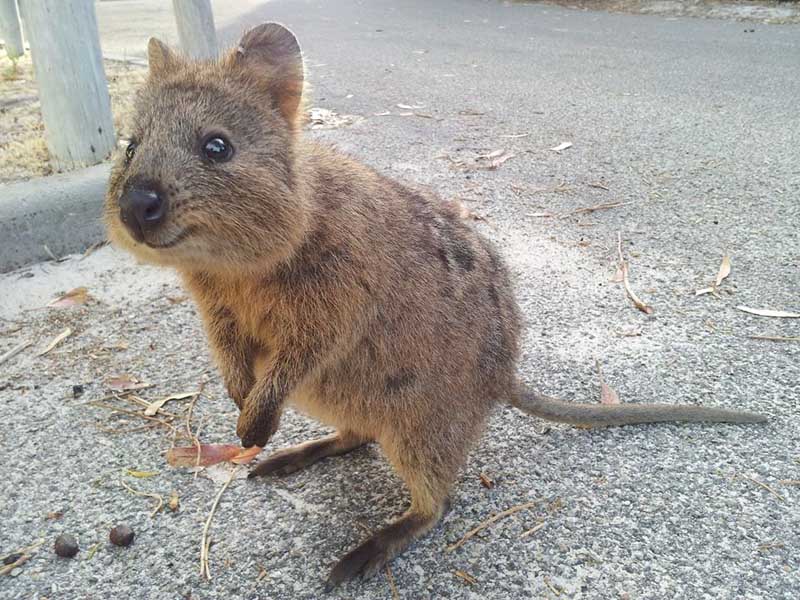
Dubbed the world’s happiest animal, you only need to search for ‘quokka selfie’ to see why.
With chubby cheeks, dark eyes and a toothy smile, it’s little wonder they win so many hearts.
Quokkas show no fear of the tourists who visit them on Rottnest Island. Having a close-up encounter is not only easy to achieve; it is difficult to avoid.
What are Quokkas?
Quokkas are a miniature wallaby. Wallabies are similar to a kangaroo only shorter and stockier.
They are native to Western Australia and Rottnest Island.
Rottnest Island is one of the few places you can see wild populations and it is just a short ferry ride from Perth. If super cute is how you like your wildlife, make sure Rottnest is on your itinerary.
There is also wonderful marine life around the island including seasonal sightings of blue and humpback whales, bottlenose dolphins and New Zealand Fur seals.
2. Giant Australian Cuttlefish in South Australia
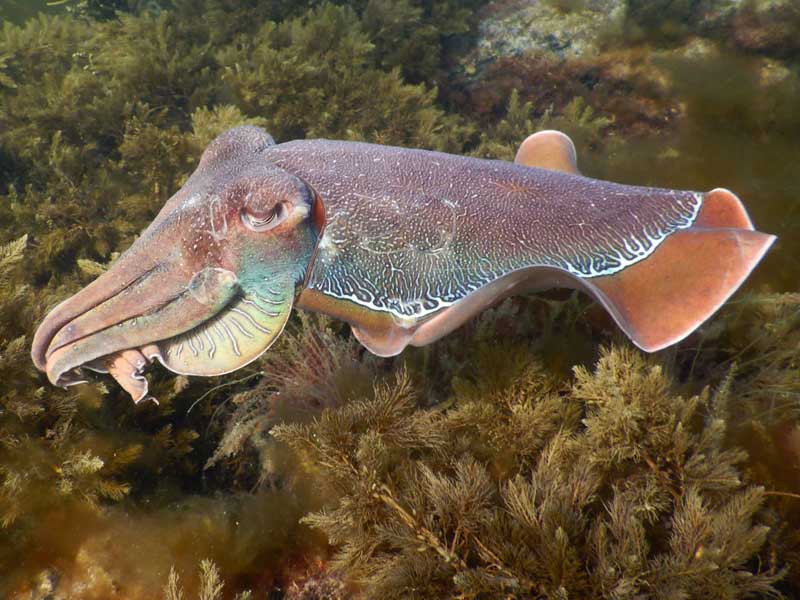
Each winter more than 100,000 giant Australian cuttlefish arrive to breed in the waters near the South Australian city of Whyalla.
It is an extraordinary mass migration that you can view by snorkelling or diving.
The cuttlefish are in only a few metres of water and can be accessed from shore.
If ever there was a creature that proves cute and furry isn’t everything, this is it.
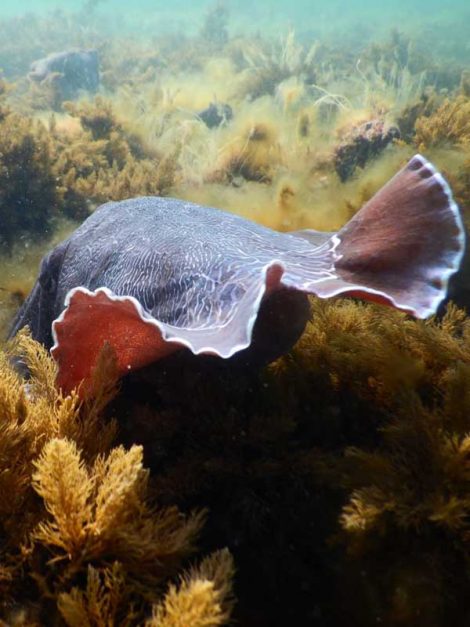
With long flaring tentacles, large intelligent eyes and their trademark pulsating colour changes, watching the big males compete for a mate is a fascinating sight.
Be prepared for cold water. At 12 to 15 degrees Celsius you’ll want to hire the appropriate gear from the local dive shop but it’s worth the effort.
Dolphins and seals (but no sharks) are often in the area taking advantage of the easy meal.
Check out our experience swimming with Whyalla’s Cuttlefish
3. Jumping Crocodiles in the Northern Territory
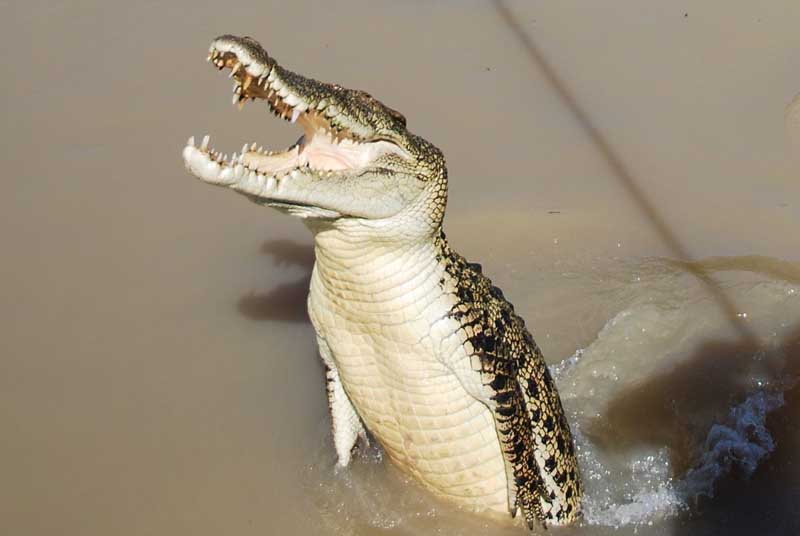
You won’t be getting in the water for this next adventure.
Crocodiles – If you thought they couldn’t be more frightening; take a cruise on the Adelaide River in the Northern Territory. You’ll see them leap from the water for food.
The chomping sound of their massive jaws closing will send a chill down your spine.
A crew member, who surely isn’t paid enough for what they do, holds a pole over the water with a piece of meat on the end.
Enormous saltwater crocodiles swim up to the boat and launch themselves metres into the air for the meal on a stick.
It is spectacular sight. You’ll find yourself as close to feeding crocodiles as you will ever want to be.
4. Platypus spotting in the Otway Ranges
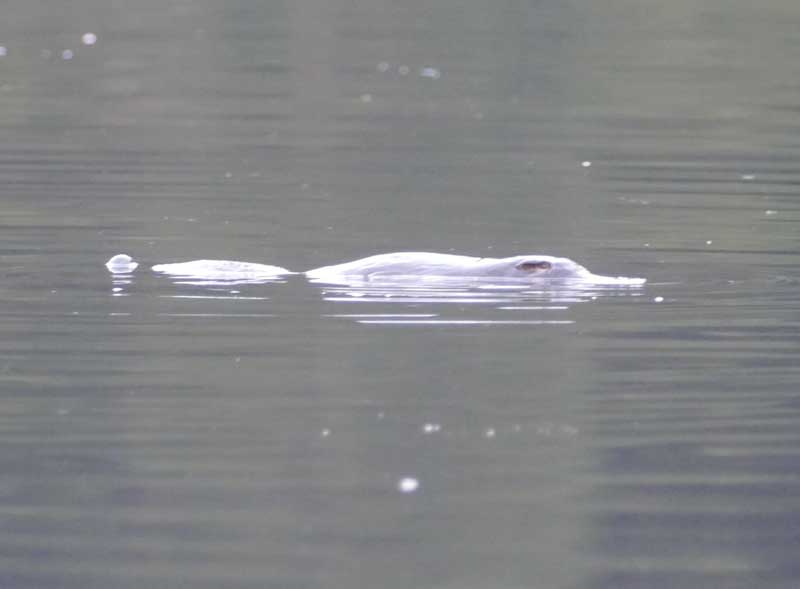
If leaping prehistoric monsters aren’t your thing, platypus spotting on Victoria’s Lake Elizabeth might be more your pace.
They are most active at dawn and dusk which is the perfect time to experience the beauty of the place.
Surrounded by a dense forest of eucalypts and tree ferns, the tranquillity of Lake Elizabeth gives it a meditative air.
You can try spotting a platypus from the path that circles the lake. Better yet, go on a canoe tour and be in the perfect position to catch a glimpse of them from the water.

The platypus is so odd the first specimens were condemned as a hoax. Covered in fur, it lays eggs, has a duck-bill and is notoriously difficult to spot.
They can surface anywhere on the lake and don’t stay above water for long. It’s an exciting game of hide and seek that can make staying quiet – which is important when you try to see a platypus – quite tricky.
If you are lucky, one will surface near your canoe. Seeing one in the wild will put you in an exclusive club.
5. Australian Fur Seals in Port Philip Bay
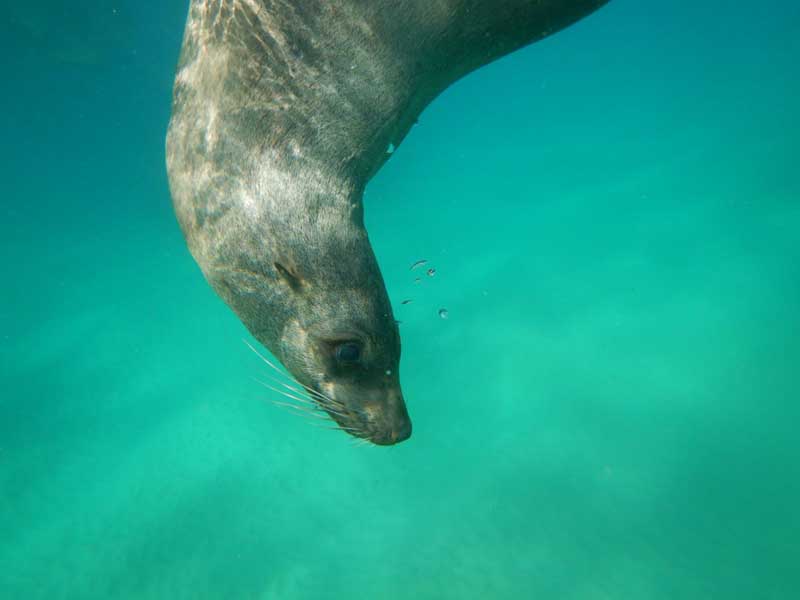
After you have spotted a platypus, stay in Victoria and go to the coastal town of Queenscliff to swim with Australian Fur Seals.
This is a less subtle experience than that provided on Lake Elizabeth.
Described as the Labradors of the sea for their playful personalities, swimming with the seals is about as interactive a wildlife experience as you’re ever going to have.
The seals love company and you can expect to be face to facemask with these inquisitive creatures while they perform their aquatic gymnastics around you.
As you snorkel along, they swim beneath you, upside down, apparently waiting for you to join in. It is a joyful experience.
When you leave the water, it feels like you’re leaving a great party too early.
6. Maria Island Wombats
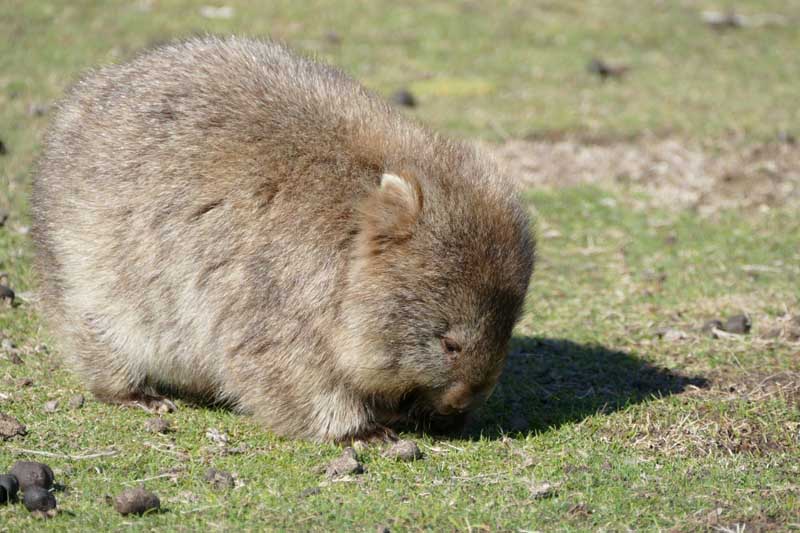
Not as well-known as koalas and kangaroos, wombats are up there for cuteness with the quokkas.
Maria Island off the east coast of Tasmania is the perfect place to see these rotund, sleepy faced animals.
A close relative of koalas, they are more at home in their burrow or grazing in open grassland than perched in a tree.
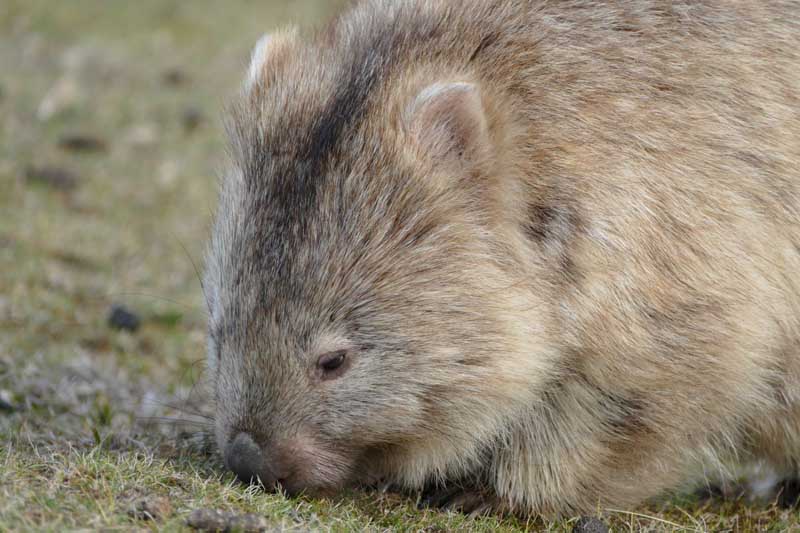
You’ll have no trouble finding them. In fact, they are so accessible; authorities have introduced a wildlife pledge. It reminds visitors that the wombats are wild animals and not to pat them.
It’s good advice, but it does speak to how appealing they are.
As well as wombats, Maria Island is home to Tasmanian devils, wallabies and kangaroos. It is also a highly regarded site for bird watchers.
Check out our day trip to Maria Island.
7. Far North Queensland Cassowaries
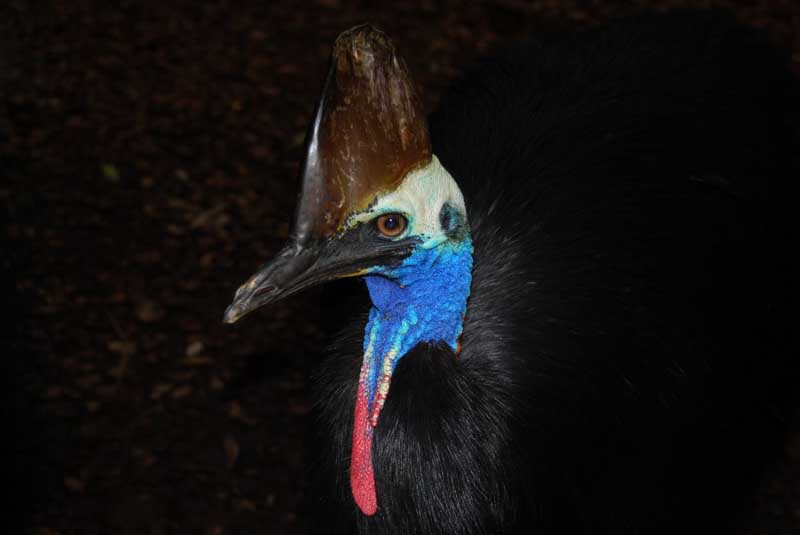
Strictly speaking, Cassowaries are not unique to Australia. You also find them in New Guinea. However, looking for them takes you to tropical Far North Queensland which makes them worth finding.
Unlike Australia’s other large flightless bird, the emu, cassowaries can be hard to locate.
You’d think an animal six feet tall with a blue and red neck would stand out, but you do need to be in the right place at the right time to spot one.
There is a region in Far North Queensland called the Cassowary Coast. Not surprisingly, it has several Cassowary spotting hotspots. A great place to start is on the Lacey’s Creek walk near Mission Beach.
The easy 30-minute walk takes you past crystal clear creeks and through tropical rainforest.
The area contains many plants that cassowaries like to eat.
Take your time and walk quietly. You might have to do an extra lap of the walk, but at Lacey’s Creek, you have a great chance of seeing one of these beautiful birds.
Dave and Deb’s Favourite Australian Wildlife Encounters
8. Kangaroo Island South Australia
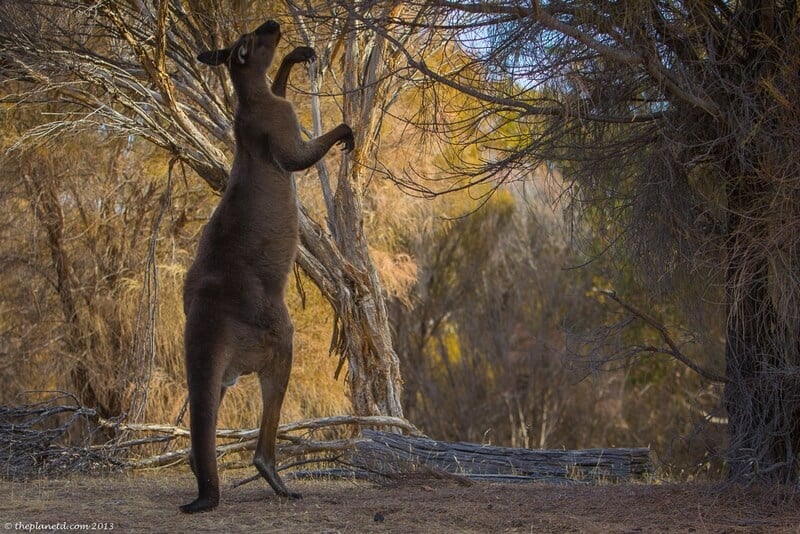
A trip to Kangaroo Island is one of the best wildlife experiences we had in Australia.
Filled with Kangaroos and Wallabies, we definitely had our fill of getting up close and personal with a lot of the endemic mammal species of Australia.
There are many places to see kangaroos in the wild and at sanctuaries.
Kangaroo Island has a few protected areas worth visiting.
Not only did we see kangaroos, but there is also the Hanson Bay Wildlife Sanctuary that is great for catching a good look at Koalas.
Seal Bay has a fantastic boardwalk and offers guided tours to see the endangered Australian sea lions.
9. Great White Sharks – Port Lincoln
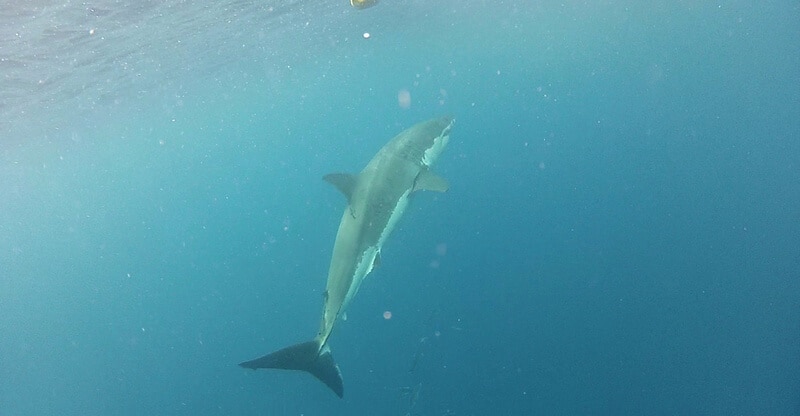
If you want to come face to face with Great White Sharks, Port Lincoln in South Australia offers tours two hours off the coast to hop in the water in the safety of a cage.
Adventure Bay Divers is a company that has won several eco-tourism awards. When diving with Great Whites here, they use music to attract the sharks rather than chumming the water.
It is not some sort of high tech sonar that attracts the sharks, it is actually hard rock music. While you wait for sharks to come along and take a look, you can even play some air guitar underwater!
10. Dingoes – Fraser Island
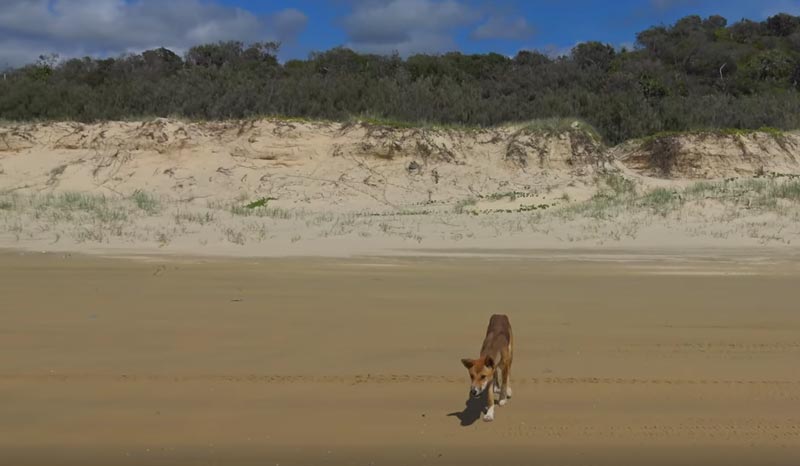
Fraser Island is the world’s largest sand island, but it is also one of the best places to visit in Australia to see dingoes in the wild.
Dingoes are wild Australian dogs that are found throughout mainland Australia but are rapidly declining in numbers. They have been in Australia for 5000 years, but farmers have been shooting them for decades to keep them from their livestock.
There is a massive dog fence that stretches 5000 km across the continent keeping wild dingoes from human contact.
To gain an appreciation for them, a visit to Fraser Island is in order.
Not only is it an amazing adventure to drive on 75-mile Beach, but to see dingoes hanging out on the shore and inland by the lakes is a once in a lifetime (at least for us) experience.
11. Koalas – Mikkira Station
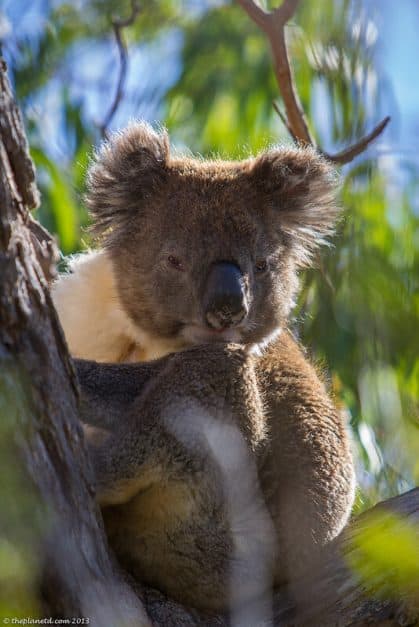
Koalas are considered vulnerable to extinction, and the fires in New South Wales and Queensland are not helping these cute creatures.
But at Mikkira Station in South Australia, you can see Koalas slumbering in the safety of their eucalyptus trees.
Contrary to popular belief, koalas are not koala bears. They are a species of marsupial.
Adult koalas are tiny, growing to less than 3 feet and they are adorable. Koalas can be found in Eucalyptus trees. But you need a keen eye. They barely move and blend into their environment.
12. Yellow-footed Rock Wallaby – Wilpena Pound
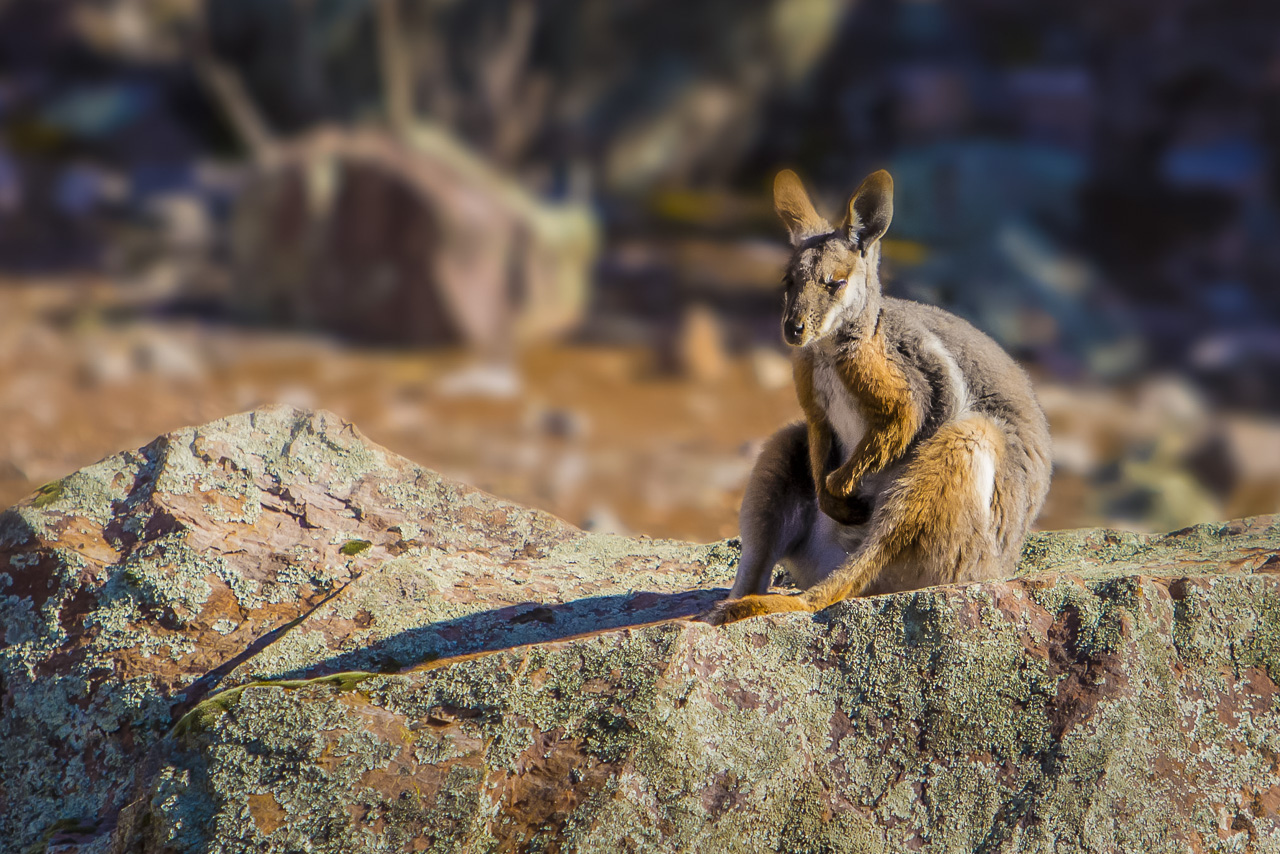
Located in the Flinders Ranges of South Australia, it’s a 450 km drive from Adelaide.
you can stay right in the park and tour the outback landscape and the awe-inspiring Wilpena Pound.
Flinders Ranges is 100 million years old and a tour of the ancient landscape is truly fascinating.
It is also one of the best places in Australia to spy the endangered yellow-footed rock wallaby.
And those are our favourite wildlife experiences in Australia. Australia is filled with many strange and wonderful animals. When you go there, you really must seek them out!
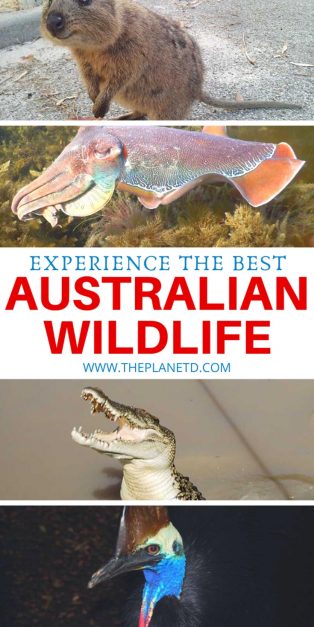
Read More about Australia:
- The Best of Kangaroo Island
- Swim with Dolphins in South Australia
- 23 of the Most Iconic Places to Visit in Australia
- 15 Amazing Wildlife Encounters in Western Australia
- 18 Great Things to do in Queensland, Australia
And Enjoy these Australian City Guides

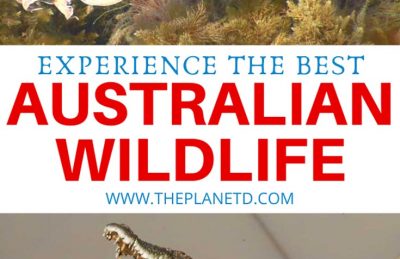
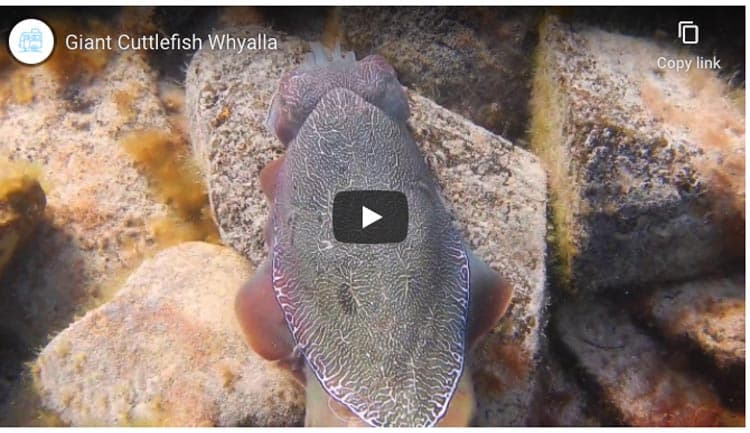
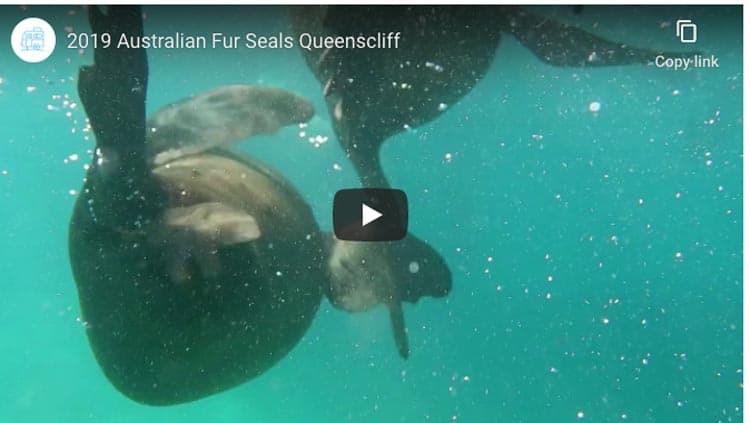
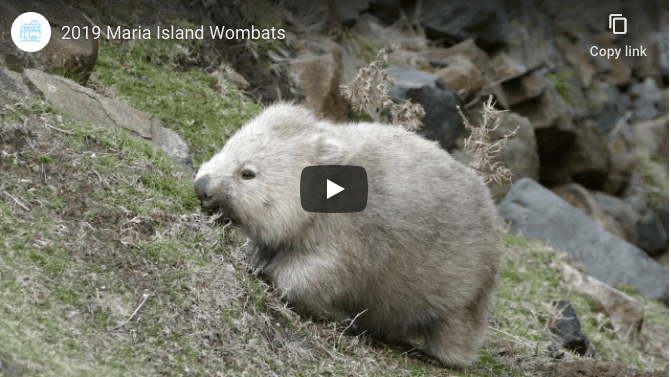
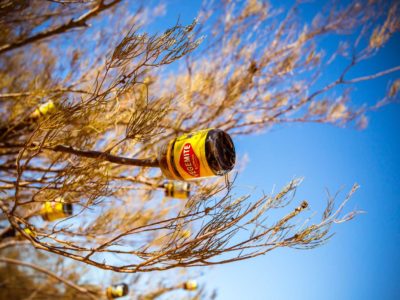
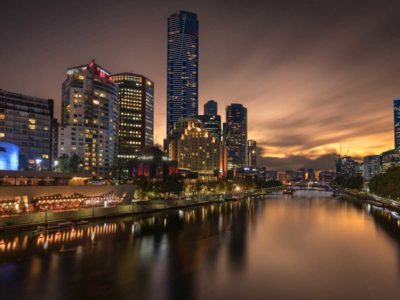
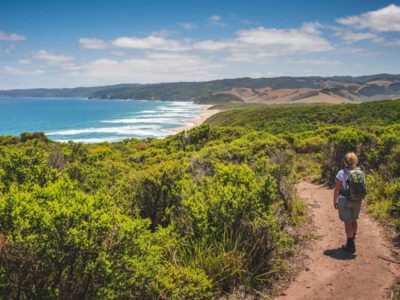
Australia really has lots of strange and wonderful animals, and they must be protected too. I’ve been on few camping adventures and seen different animals in the wild which always fascinates me.
I keep thinking about whether all these will be protected during flames. It’s so pitiful what’s going on. Australia has a particularly rich natural life and exceptional.
awesome and great wildlife.
Thank you for sharing this wonderful information, this is really amazing
Love your write up on Australian animals! You have to be careful if you are camping at Fraser Island with kids. The Dingos are known for stealing babies from campsites in the night! The famous case is actually from Uluru but Im reading it is happening at Fraser now too.
Thes wildlife has heavily been affected by the recent fire incident.
I believe they will recover from such loos.
thanks The Planetd for giving us such an information concerning Australia
I wonder if all these will be safe during fires. It’s so sad what is happening. Australia has such a rich wildlife and unique.
Great grief befell Australia. Due to fires, a huge number of animals died, including rare breeds. Very sorry….